
Roots
The gentle descent of evening, as daylight softens and the world prepares for slumber, has long invited a particular ritual for the hair. It is a practice whispered through generations, across continents, a quiet acknowledgement of hair’s delicate nature and its deep connection to self. This nightly gathering, often beneath a simple cloth, transcends mere habit; it speaks to an ancient understanding, a protective instinct woven into the very fabric of human care. The desire to shield one’s strands, to preserve their vitality through the resting hours, holds a universal resonance, a shared wisdom that spans millennia and diverse cultures.
Consider, for a moment, the quietude of a sleeping space, and the subtle, yet persistent, friction that can occur as hair meets pillow. This seemingly small interaction, repeated night after night, historically prompted a search for solutions, leading to traditions that nurtured hair even in repose.

What Ancient Cultures Protected Hair at Night?
From the earliest recorded civilizations, a recognition of hair’s significance extended into nighttime routines. Ancient societies, often reliant on intricate hairstyles for social standing or spiritual expression, sought methods to preserve these coiffures and maintain hair health. In ancient Egypt, where elaborate wigs and braided styles were commonplace, coverings likely played a role in protecting these creations and the natural hair beneath. The meticulous attention paid to beauty and personal presentation in these cultures suggests a logical extension of care into the sleeping hours.
Similarly, across various regions of Asia, where long, lustrous hair was a prized attribute, silk wraps and other coverings were utilized. Indian women, for instance, traditionally used silk scarves and wraps not only for daytime protection from environmental elements like dust and sun, but also as a means to reduce friction and prevent breakage, making these an essential part of their comprehensive hair care regimens. This practice, dating back to ancient times, highlights an early awareness of how fabric can influence hair’s condition.
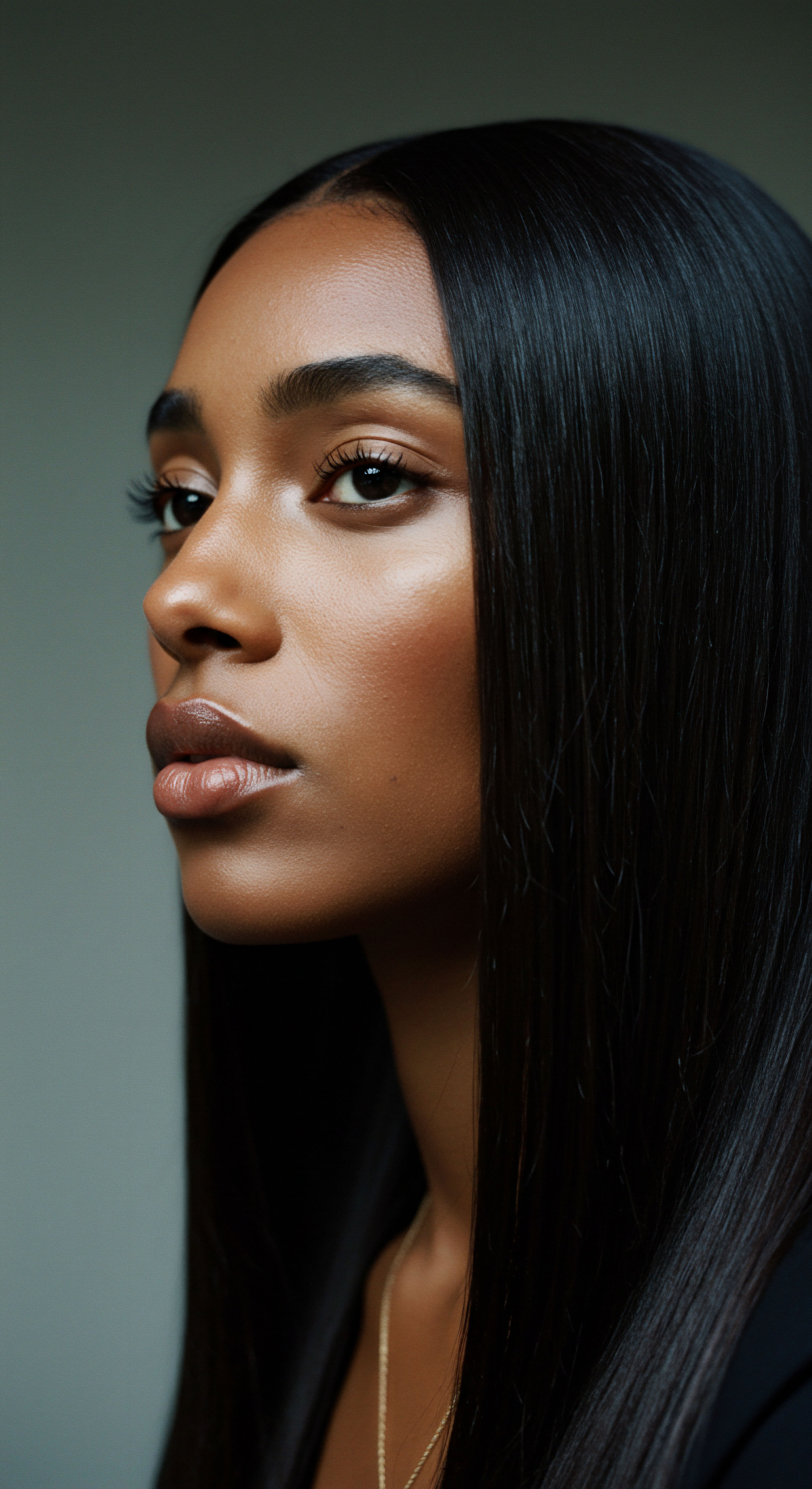
Why Did Nighttime Hair Coverings Become Common?
The proliferation of nighttime hair coverings was driven by a confluence of practical needs and cultural values. Before the advent of modern central heating, homes, especially bedrooms, could become quite chilly, particularly in Northern Europe. A nightcap offered a simple, yet effective, means of retaining warmth for the head. Beyond thermal comfort, the preservation of elaborate hairstyles was a considerable factor.
In eras when hair styling was a time-consuming and often expensive endeavor, a covering at night could extend the life of a coiffure, reducing the need for daily re-styling. This was particularly true for women with intricate curls or waves, as evidenced by the resurgence of nightcaps in the early 20th century to protect styles like Marcel waves. The material chosen for these coverings also played a vital role. Silk and satin, with their smooth textures, minimize friction against the hair, helping to prevent tangles, frizz, and breakage. This understanding of material science, though perhaps not articulated in modern terms, was intuitively applied through generations of practice.
The quiet act of covering hair at night, a tradition echoing across cultures, served both the practical purpose of preservation and the deeper human desire for self-care and identity protection.
The practice was not confined to a single social stratum. While elaborate silk coverings might have signified wealth in some cultures, simpler cotton or linen caps were worn by all segments of society, driven by the universal need for warmth and hair protection. This shared experience, transcending economic divides, underscores the fundamental utility that nighttime hair coverings provided in daily life across various historical periods.

Ritual
Stepping into the realm of nightly hair rituals reveals a landscape rich with purpose and quiet dedication. The act of covering hair before sleep transforms from a mere chore into a moment of mindful attention, a gesture of care for one’s physical self and, often, one’s spirit. It is a practical wisdom, passed from hand to hand, generation to generation, embodying a gentle guidance towards sustained hair health.
The very touch of fabric, the systematic gathering of strands, becomes a soothing prelude to rest, a way to prepare both hair and mind for the stillness of the night. This approach, where method meets intention, has long shaped the nocturnal practices of textured hair communities, providing a blueprint for enduring vitality.
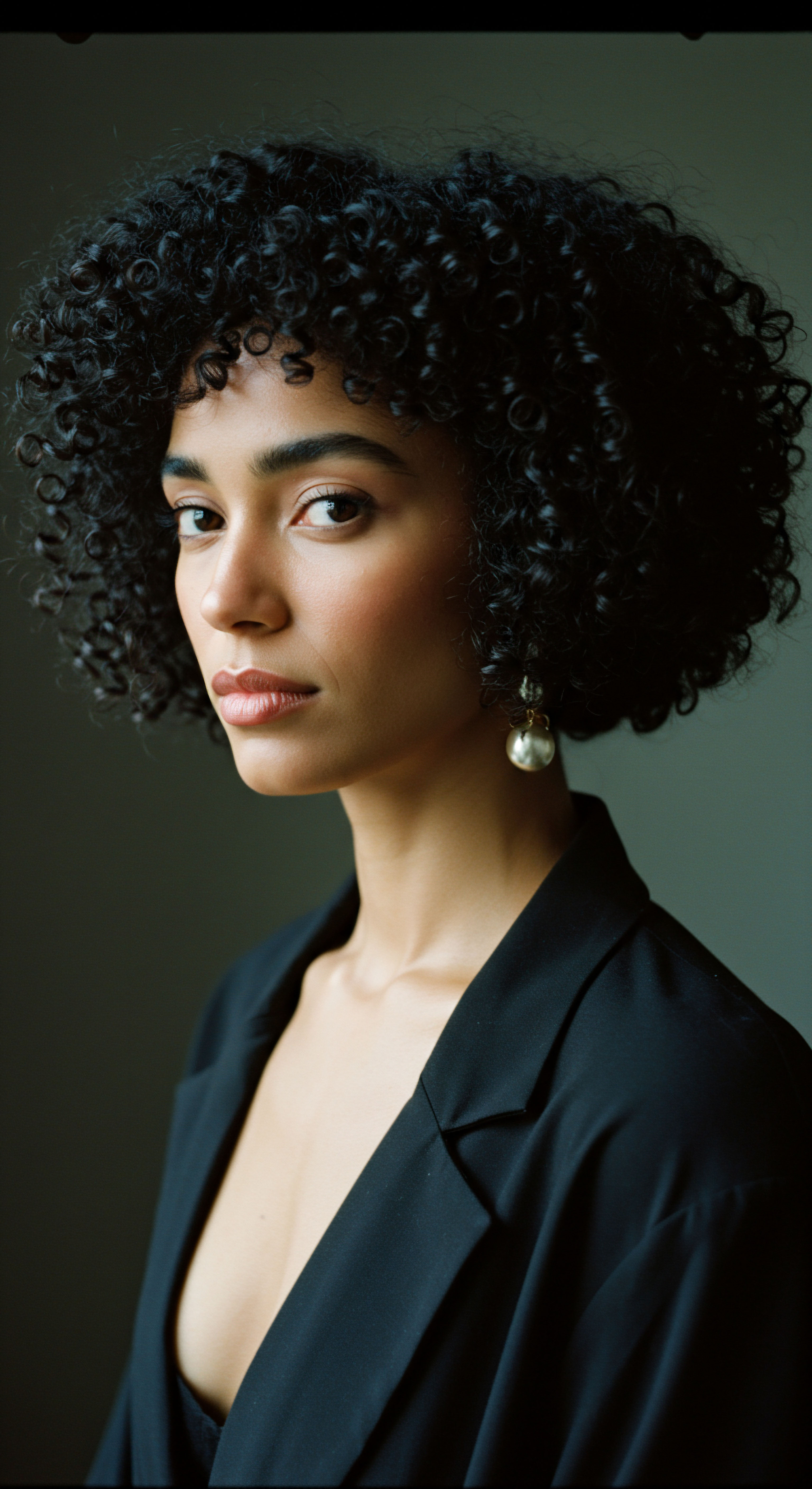
What Materials Were Used in Historical Night Coverings?
The choice of material for nighttime hair coverings historically depended on availability, climate, and the specific needs or desired effects. Early coverings often consisted of readily available natural fibers. In colder climates, wool and cotton offered warmth, as seen in the simple nightcaps of Victorian Europe, worn to combat chilly bedrooms. As trade routes expanded and textile production evolved, more luxurious materials gained prominence.
Silk, revered for its smooth texture and minimal friction, became a favored choice across diverse cultures. In China, silk hair wraps were used not only to protect hair and maintain hairstyles but also to signify social status, particularly during the Tang Dynasty. Indian women similarly valued silk for its ability to reduce friction and prevent breakage. The adoption of silk and satin in later periods, particularly in the African diaspora, highlights a conscious selection of materials known to be gentle on delicate strands, helping to preserve moisture and reduce tangles.
- Linen ❉ Often used in medieval coifs and veils, providing breathability and cleanliness.
- Cotton ❉ A common and accessible material for nightcaps, particularly in colder European settings.
- Silk ❉ Highly prized for its smooth surface, reducing friction and preserving hair’s natural oils.
- Satin ❉ A later alternative to silk, offering similar low-friction benefits at a potentially more accessible price point.

How Did Nighttime Coverings Support Hair Health?
The practical benefits of nighttime hair coverings, particularly for textured hair, are substantial and have been understood for centuries. One primary advantage is the reduction of friction. Cotton pillowcases, while comfortable, can absorb moisture from the hair and create abrasive surfaces that lead to tangles, frizz, and breakage. Smooth materials like silk or satin allow hair to glide effortlessly, preserving natural oils and preventing mechanical damage.
This is especially crucial for textured hair, which tends to be drier and more susceptible to breakage than straighter hair types. Grace Eleyae, founder of a company specializing in silk and satin-lined caps, notes that covering hair provides “peace of mind, which in turn aids in getting a good night’s rest,” as it helps prevent waking with tangled strands. This practical application of material science, whether through ancient silk wraps or modern satin bonnets, speaks to a consistent understanding of hair’s vulnerability during sleep.
The deliberate selection of smooth fabrics for night coverings reflects a timeless wisdom regarding hair’s vulnerability to friction and moisture loss during sleep.
Beyond friction, coverings help to maintain moisture levels within the hair shaft. For individuals with textured hair, retaining moisture is a constant endeavor, and a bonnet or wrap creates a protective environment that prevents moisture from evaporating into the air or being absorbed by bedding. This contributes to the longevity of hairstyles, reducing the need for frequent manipulation and restyling, which in turn minimizes further damage. Historical practices, such as brushing hair before bed and then braiding it loosely beneath a cap, were also aimed at distributing natural scalp oils down the hair shaft, contributing to overall hair health and shine.
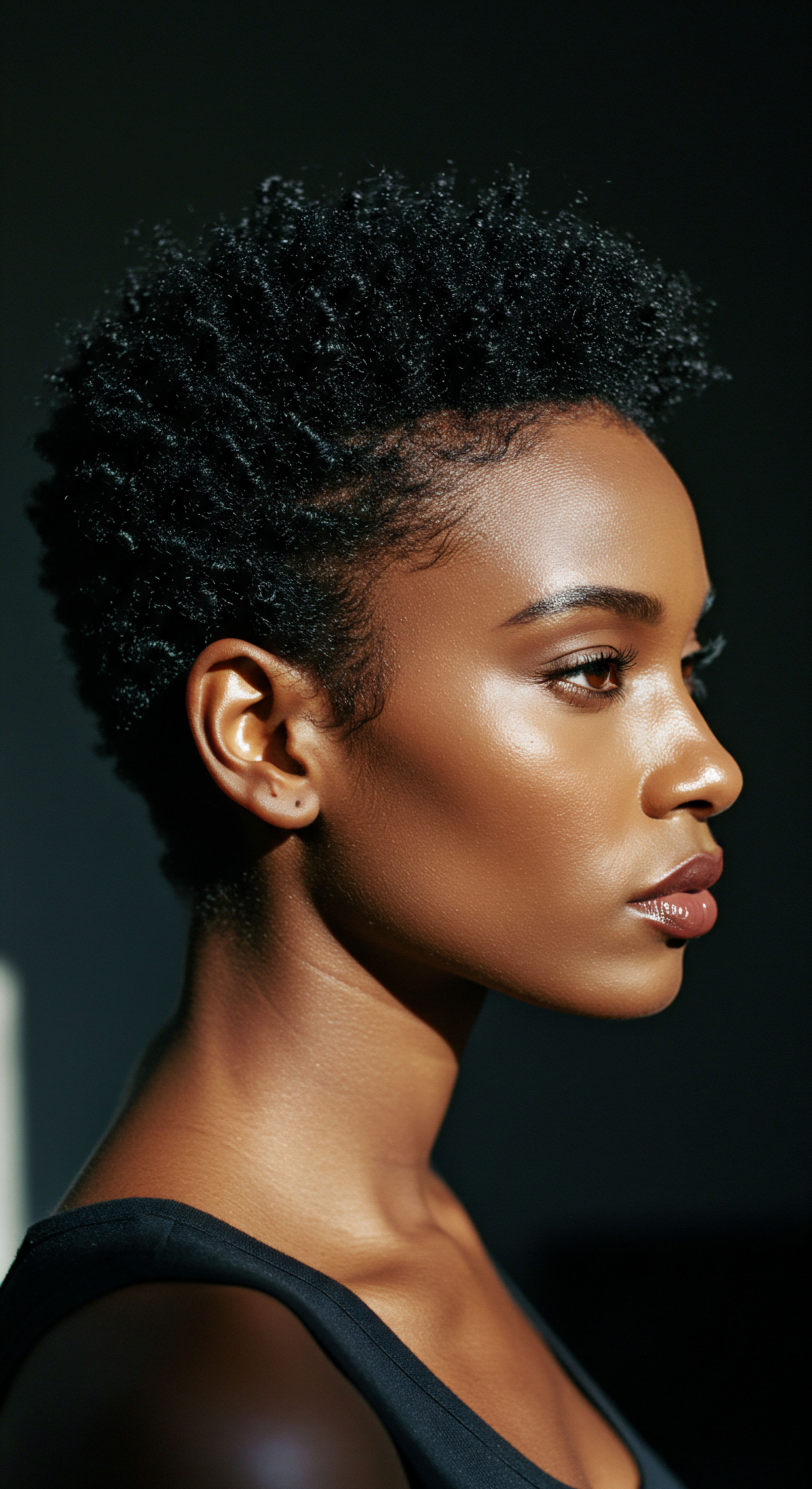
Relay
As we move deeper into the currents of historical traditions, the act of covering hair at night reveals itself as a complex interplay of practical necessity, social custom, and profound cultural significance. It is a practice that transcends simple utility, speaking volumes about identity, status, and resistance across different societies. The historical echoes of this tradition offer a lens through which to consider the multifaceted relationship between hair, personal care, and broader societal narratives. To truly grasp the depth of this practice, we must look beyond the surface, drawing upon the careful observations of historians and the insights of social science, to reveal the hidden layers of meaning within these nocturnal rituals.

What Societal Meanings Did Nighttime Hair Coverings Hold?
The significance of nighttime hair coverings extended far beyond mere hair preservation; they were often imbued with deep societal and symbolic meanings. In many cultures, hair itself carried considerable weight, representing aspects of identity, virtue, and marital status. The act of covering hair, particularly for married women, was a widespread custom in various historical contexts, from ancient Mesopotamia to medieval Europe and Orthodox Jewish communities.
In medieval Europe, for example, a woman’s uncovered hair could signify a lack of virtue, while a covered head marked her as respectable and married. This social coding meant that even in the privacy of one’s home, the habit of covering hair, or at least preparing it for the night in a manner that implied coverage, was often ingrained.
A striking and, at times, painful dimension of this tradition is found within the history of the African diaspora. While African cultures had their own rich traditions of head coverings, often signifying status, wealth, or spiritual adherence, the experience of enslaved Black women in the Americas introduced a different, oppressive layer of meaning. During slavery, headwraps and bonnets were, at times, weaponized, mandated to visibly distinguish Black women as lesser or subhuman. However, in a profound act of resistance, these women reclaimed the headwrap.
They transformed it into a symbol of dignity, pride, and even a means of covert communication, using the folds and styles to convey coded messages to one another, unbeknownst to their enslavers. This dual nature of the head covering – imposed yet reclaimed – illustrates a powerful example of human resilience and the enduring spirit of self-expression.
Beyond practicalities, nighttime hair coverings historically served as markers of social standing, marital status, and, in some instances, powerful symbols of resistance against oppression.
The cultural significance of head coverings continues today, particularly within Black communities. The nightly routine of wrapping hair in a silk scarf or bonnet is not just about preventing frizz or preserving a style; it is a ritual passed down through generations, an act of self-care and a connection to ancestral practices. As Grace Eleyae observed, “In my community, wrapping our hair was for protection and to extend styles.
There were never very many products that catered to the type and amount of moisture needed for Black hair so the longer we could extend a style, the better. It meant less manipulation and damage to our strands.” This statement points to a legacy where resourcefulness and protective practices became paramount due to systemic lack of suitable products, making the nightly covering a cornerstone of textured hair health and style longevity.
| Reason Warmth |
| Cultural Context Northern Europe |
| Period Middle Ages to Early 20th Century |
| Reason Hairstyle Preservation |
| Cultural Context European, African Diaspora |
| Period Victorian, Edwardian, 20th Century |
| Reason Modesty / Social Status |
| Cultural Context Medieval Europe, Orthodox Jewish, African |
| Period Ancient to Present |
| Reason Protection from Damage (Friction, Moisture Loss) |
| Cultural Context Global, particularly African Diaspora |
| Period Ancient to Present |
| Reason Concealment (Wigs, Curlers, etc.) |
| Cultural Context European |
| Period 17th-20th Century |
| Reason Resistance / Identity |
| Cultural Context African Diaspora |
| Period Slavery Era onwards |
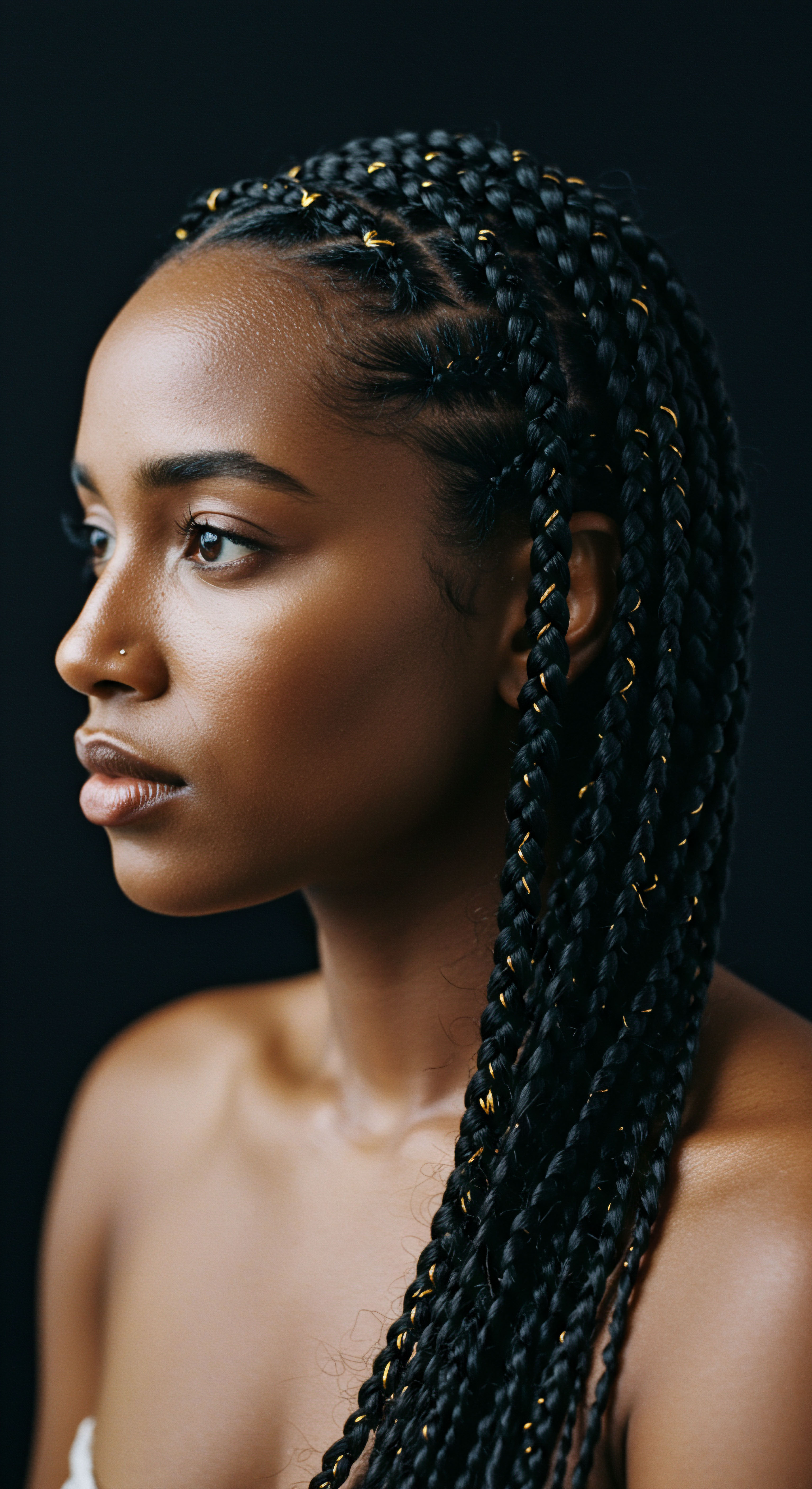
Does Science Validate Ancient Night Hair Practices?
Modern hair science, though operating with different terminology and tools, often provides validation for these historical nighttime practices. The understanding of how friction affects the hair cuticle, leading to breakage and frizz, directly supports the ancient preference for smooth materials like silk. Research into hair porosity and moisture retention also confirms the benefits of creating a protective barrier around the hair at night. A study published in a medical journal on traction alopecia, a form of hair loss resulting from prolonged tension, notes that “history of hairstyles worn at night may aid in determining the etiology and diagnosis of traction alopecia.” This suggests that even seemingly innocuous nighttime styling habits, or lack thereof, can contribute to long-term hair health outcomes, thereby underscoring the importance of protective coverings.
Consider the phenomenon of “nocturnal traction,” a concept recognized in contemporary hair science, which describes the tension and pulling on hair follicles that can occur during sleep, especially with certain hairstyles or rough bedding. This modern understanding directly echoes the historical concern for preserving intricate coiffures and preventing tangles, which were practical manifestations of avoiding such stress on the hair. The consistent advice across centuries, from braiding hair loosely before bed to wearing a smooth cap, points to an intuitive, generational understanding of hair mechanics. The scientific basis for these practices lies in minimizing physical stress and maintaining the hair’s natural moisture balance, factors critical for hair integrity regardless of texture.
A notable point of intersection between historical practice and modern data comes from the recognition of sleep-related hair damage. While a specific historical study quantifying this damage is elusive, the anecdotal evidence from generations of individuals, particularly those with textured hair, speaks volumes. For instance, the widespread adoption of silk or satin bonnets among Black women today, often described as a “rite of passage” passed down from mothers, directly addresses the issue of friction and moisture loss caused by cotton pillowcases.
This cultural continuity, driven by lived experience and observed hair health, serves as a powerful, collective case study validating the protective benefits of nighttime hair coverings. The self-perceived “good hair day” linked to protected hair and its positive impact on confidence, as noted in contemporary discussions, further reinforces the psychological and practical value of these rituals.

Reflection
The journey through historical nighttime hair covering practices reveals more than just a series of customs; it uncovers a persistent human connection to hair as a symbol of identity, health, and heritage. From the practicalities of warmth and style preservation to the profound statements of modesty and resistance, these traditions reflect an enduring wisdom. They whisper of a time when care was a slower, more deliberate act, intertwined with the rhythms of daily life and the deeper meanings held within our strands. As we look upon these echoes of the past, we are invited to consider the gentle, yet powerful, legacy that continues to shape our understanding of hair and its profound place in the human story.
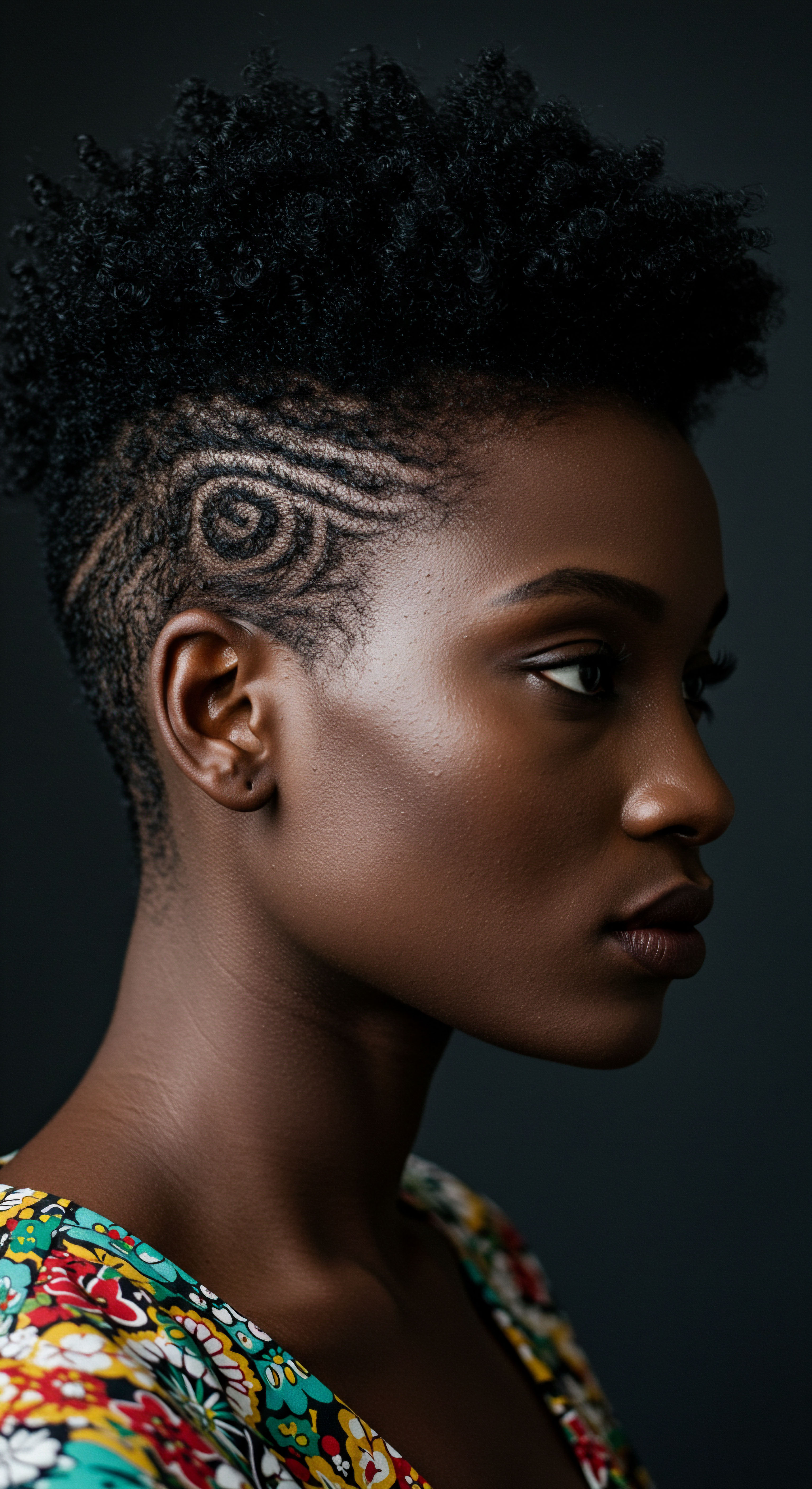
References
- Mokoena, H. (2016). The Doek ❉ A History of Headscarves in South Africa. Wits University Press.
- Sherrow, V. (2006). Encyclopedia of Hair ❉ A Cultural History. Greenwood Press.
- Rappaport, S. (2002). The Jewish Woman in Rabbinic Literature ❉ A Psychosocial Perspective. KTAV Publishing House.
- Sartin, J. (2018). Hair and the Social Order ❉ A History of Hairstyles and Identity. Bloomsbury Academic.
- Tobin, S. (2017). Dressing the Part ❉ A Cultural History of Hair and Fashion. University of Chicago Press.
- Lester, A. (2001). Victorian Hair ❉ Art and Fashion. Shire Publications.
- Gale, R. (2007). Head Coverings in the Ancient World. Gorgias Press.
- Try, T. (2025). The Cultural Significance of Hair in Religious Traditions. Ansgar University College.
- Johnson, D. A. (2021). Sleep Health Disparities and Their Impact on Chronic Diseases. Emory University.
- Douglas, T. (2023). Unveiling the History of the Hair Bonnet for Black Women. Hype Hair.